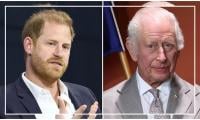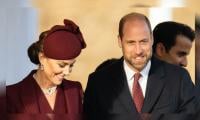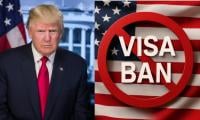Understanding Modi-Xi bonhomie
Indian Prime Minister Narendra Modi’s two-day visit to China on the invitation of President Xi Jinping had a ring of grandeur to it. Both the leaders spent nine hours together in a span of two days, discussing a range of issues, from agriculture, to energy, to technology and trade etc.
Except for one odd delegation level meeting, the rest of the six interactions which included a visit to a museum, a boat ride on the East Lake and a walk along the picturesque path in the city of Wuhan, were one-on-one, with only the interpreters accompanying the two heads of states.
The tone and tenor of the visit was reflected in Chinese Ambassador to India’s, Luo Zhaohui, tweet, when he quoted President Xi as saying, “In my over 5-year presidency, I have only gone out of Beijing twice to receive foreign guests. Once in Xi’an in 2015, the other is today, Both for you. This shows how much President Xi values his personal friendship with PM Modi and China-India relations.”
The Indian prime minister, on his part, also talked about the ‘strategic and long-term perspective and respective visions and priorities’ in a departure statement. The very format of the meetings was loaded with symbolism and could not escape the attention of the observers of the region – unstructured, informal, one-on-one interactions between the Chinese president and the Indian prime minister.
As Xi Jinping played a gracious host to his Indian guest, the two leaders could not be unmindful of the gradual shift of power and resources to Asia, and the emergence of a new multi-polar world order. While both Chinese and Indian economies were of a similar size in the 1980s, the former industrialised so fast and grew its economy five times the size of India’s. Thanks to the unprecedented GDP growth rate over the last three decades, China stunned its friends and foes by lifting around 800 people out of acute poverty, and setting an example of turning its huge population into a demographic dividend. Opening up in the early 1990s, the Indian economy has also managed to achieve reasonable growth rates, with the International Monetary Fund (IMF) predicting that India will register an economic growth rate of 8 percent during the next four years.
China had a share of 3.6 percent in the global economy in 2000, which now accounts for 15 percent of the global economic activity. In its relentless journey of becoming a completely developed country by 2049, it is set to surpass the US to claim the top spot in 2032, if it continues to keep its economic momentum going. Likewise, India, with a population of over one billion, will emerge as the third-largest economic power after China and the US by 2030.
The meetings between the Chinese president and Indian PM did not produce any joint statements. On the other hand, there was a broad agreement between the two sides to improve strategic communication between their militaries to avoid incidents such as Doklam, address trade imbalances by encouraging greater Indian exports to China, and remove other ‘irritants’ that have bedevilled the relations between Beijing and New Delhi. The two heads of states also expressed their readiness to undertake a joint project in Afghanistan. The countries also committed to strengthening the existing levels of engagement and dialogue.
Despite China and India being strategic and economic competitors, they have not lost sight of the prospects of bilateral trade. By the end of 2017, the trade volume between them stood at $84.44 billion, with a trade balance of $52 billion tilted in favour of China. The takeaway message here is that while geopolitical differences can persist, countries should not let them hinder their normalisation process. They should rather be leveraged to promote peace and amity between the countries.
Beijing and New Delhi have formally interacted at the Brazil Russia India China and South Africa (Brics) and Shanghai Cooperation Organisation summits in addition to the World Economic Forum meetings, where they found common cause in advocating a multilateral trading regime and reduced tariffs on imports. However, the Sino-India relations are marked by New Delhi’s reluctance to become a part of the epic Belt and Road Initiative (BRI) and China’s objection to India’s bid for a membership of the Nuclear Suppliers Group, and China’s use of its veto power at the UNSC to include some groups in the list of banned organisations that are considered anti-India.
New Delhi’s warming up towards China, a long-time rival, also represents an acknowledgement of the fact that a status quo does not suit its long-term ambition to emerge as a regional power. While the US under the Trump administration sees India as a counterweight to China, there is a sense within Indian decision-makers that India’s long-term economic interests are best advanced by signing up for a free trade global arrangement and that it cannot benefit from competing with Beijing, which is five times bigger than it economically. Hence, cooperation, and not competition, is the way forward.
The US, under Trump’s slogan of making ‘America great again’, has emerged as one of the most vociferous opponents of the WTO. The rise of popular nationalism and protectionism at the cost of globalisation is worrisome for the developing countries. The American withdrawal from the Paris Climate Accord, which was so painstakingly put together, and the Trans-Pacific Partnership, is a sign that any consideration of a long-term western partnership has to be carefully weighed.
This here is why President Xi’s call for creating a community of shared interests through greater connectivity and integration resonates well with the global community. Thus, the BRI is uniquely positioned to foster a global cooperation for an international trade regime with the WTO at its centre. Foreign policy experts have interpreted PM Modi’s rather frank embrace of China as an attempt to keep his electoral chances bright. They say that Modi’s decisions in the realm of foreign affairs are driven by his resolve to appear as India’s strongman.
The idea inherent in his claim was to project India’s expanding power, both militarily as well as economically. His arrogance was deeply hurt in a military stand-off with China on the Doklam border. To add to that, in an amazing show of national unity, Pakistan refused to be browbeaten into submission and stood its ground firmly in the face of the Modi government’s efforts at intimidation and isolation. Thus, a privileged treatment by the world leaders like Xi Jinping, gives Modi the much needed boost to appear as a strong leader, capable of leading India amid difficult neighbourhood rivalries and an evolving global order.
India will only be hurting itself by refusing to see wisdom in normalising its relations with Pakistan and becoming part of BRI, which has been cited as an instrument to distribute fruits of shared prosperity across South and Central Asia, Europe and Africa. The Pakistani political and military leadership has spoken with one voice to offer the prospect of regional economic development via CPEC as a means of a more integrated South Asia – a clear hint to India to join the game-changing project. For a long time now Pakistan’s policy towards India has been bi-partisan and consensual, with all elements of national opinion united on the need for a constructive engagement with New Delhi.
The dream of the ‘Asian Century’ will continue to remain a pipe-dream unless a clear vision is demonstrated to eschew narrow interests in favour of long-term peace, development and stability. These certainly are the building blocks of a multilateral order that is in the making. It is hoped that President Xi used the opportunity to impress upon the Indian leader the imperative of engaging with Islamabad and learning lessons from the past.
Email: amanatchpk@gmail.com
-
 Ariana Madix And Tom Sandoval Settle Legal Dispute
Ariana Madix And Tom Sandoval Settle Legal Dispute -
 Justin Baldoni Says He Held A Prayer Gathering Before Deposition In Blake Lively Case
Justin Baldoni Says He Held A Prayer Gathering Before Deposition In Blake Lively Case -
 Travis, Jason Kelce React To Mom Donna's 'Traitors' Stint
Travis, Jason Kelce React To Mom Donna's 'Traitors' Stint -
 Enjoy Lee, Takaichi’s Viral Jamming Session, In Case You Missed It
Enjoy Lee, Takaichi’s Viral Jamming Session, In Case You Missed It -
 MrBeast Admits He's Unsure About Having Kids - Here's Why
MrBeast Admits He's Unsure About Having Kids - Here's Why -
 Prince Harry Carries Heartbreaking Hope For Archie, Lilibet Who Are Not Sharing In Their Royal Heritage
Prince Harry Carries Heartbreaking Hope For Archie, Lilibet Who Are Not Sharing In Their Royal Heritage -
 Tom Brady Breaks Silence On 'personal Life' After Alix Earle Rumors
Tom Brady Breaks Silence On 'personal Life' After Alix Earle Rumors -
 Guy Fieri Drops Health Update After Accident That Left Him In A Wheelchair
Guy Fieri Drops Health Update After Accident That Left Him In A Wheelchair -
 Experts Weigh In: Is Prince Harry Operating A PR Stunt Or The Invictus Games’
Experts Weigh In: Is Prince Harry Operating A PR Stunt Or The Invictus Games’ -
 Inside Kate Middleton’s Biography With Secrets From St Andrews To Harry & Meghan’s Royal Exit
Inside Kate Middleton’s Biography With Secrets From St Andrews To Harry & Meghan’s Royal Exit -
 Paul Mescal Reveals Shocking Move He Made In 'Hamnet'
Paul Mescal Reveals Shocking Move He Made In 'Hamnet' -
 'Kanye West Is Human Too'
'Kanye West Is Human Too' -
 Prince William Hands Kate Middleton Something Highly Sensitive To Manage With Coronation
Prince William Hands Kate Middleton Something Highly Sensitive To Manage With Coronation -
 Critics Get Honest About 'A Knight Of The Seven Kingdoms'
Critics Get Honest About 'A Knight Of The Seven Kingdoms' -
 Goldie Hawn Spills Secret Behind Kate Hudson’s Screen Talent
Goldie Hawn Spills Secret Behind Kate Hudson’s Screen Talent -
 Why Harry Unlikely To Meet William, Kate During UK Return?
Why Harry Unlikely To Meet William, Kate During UK Return?



